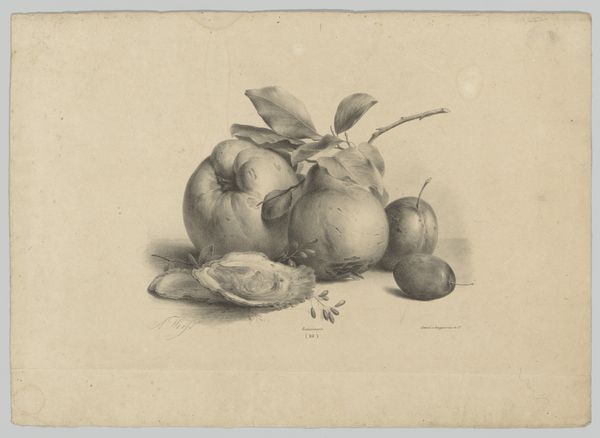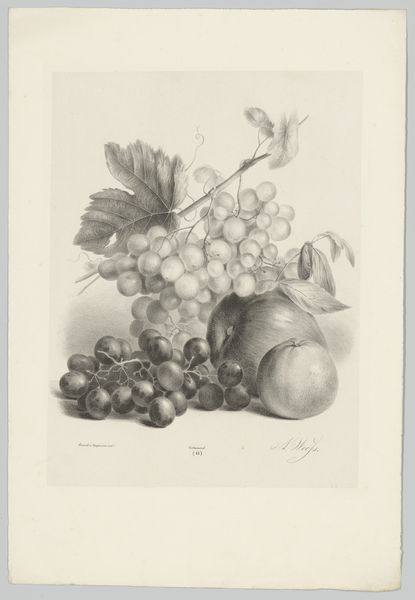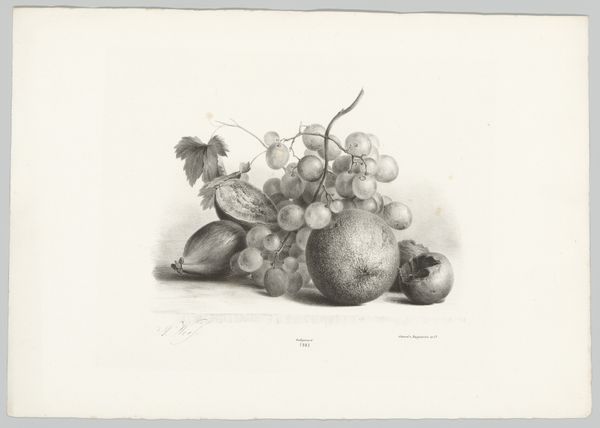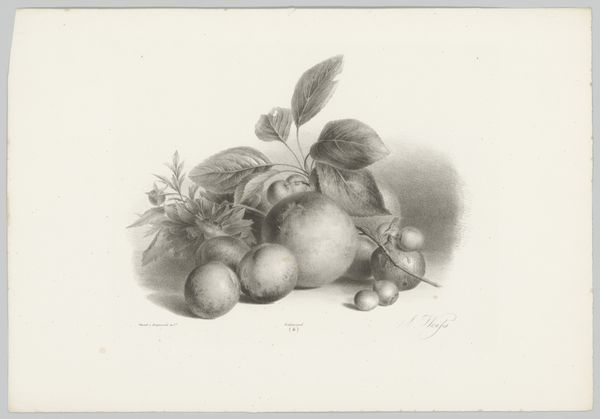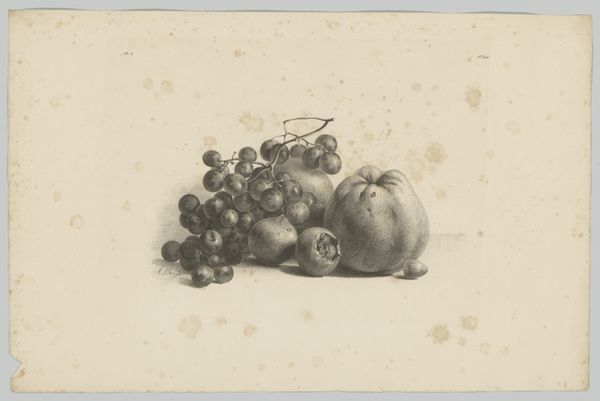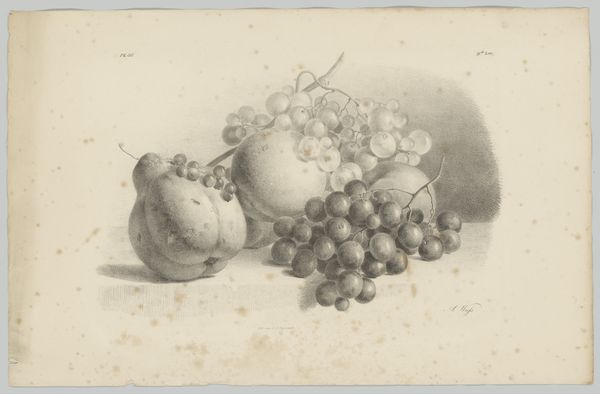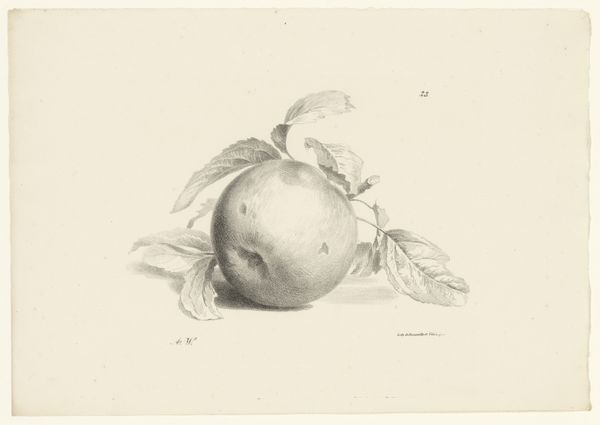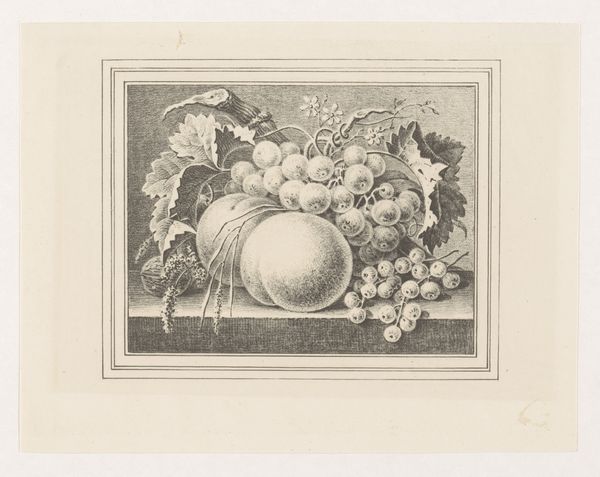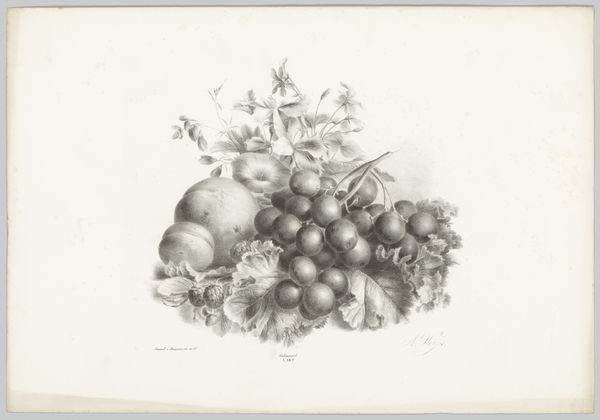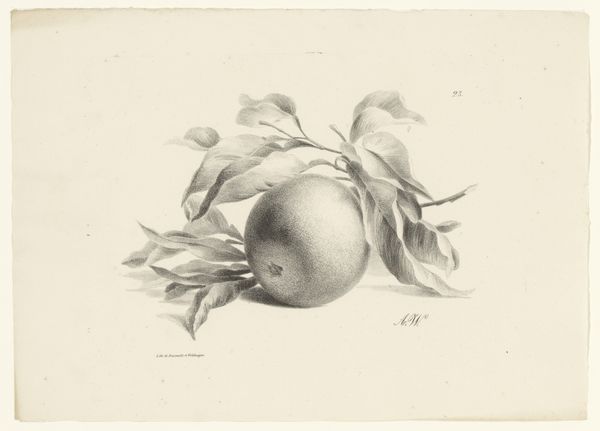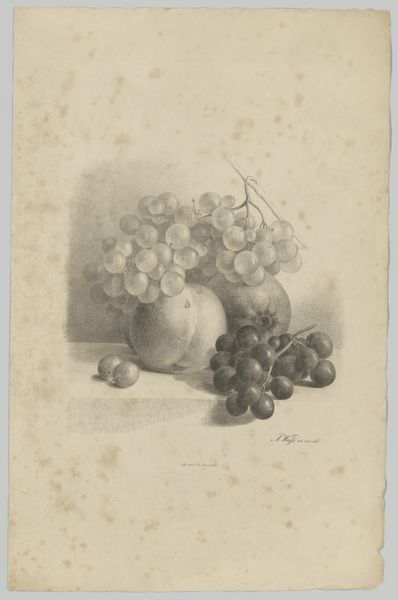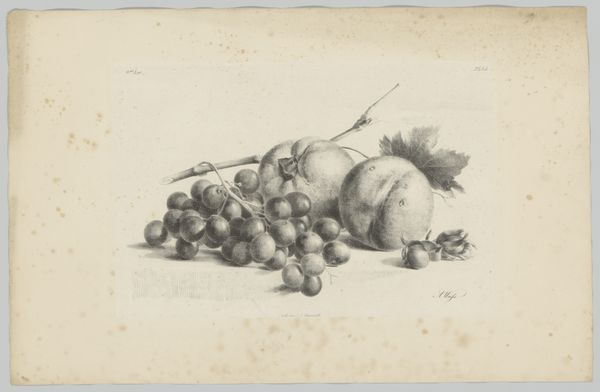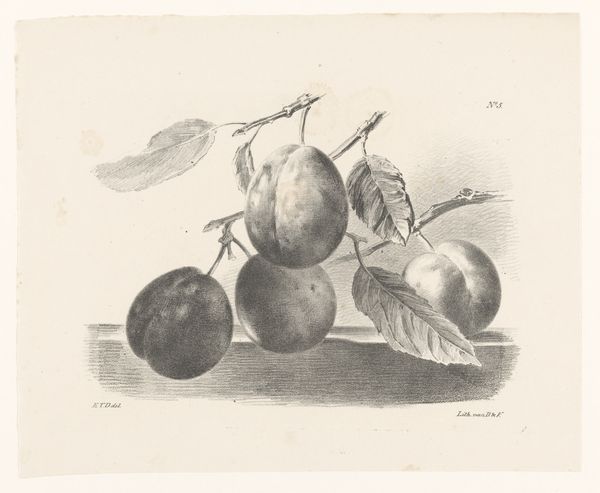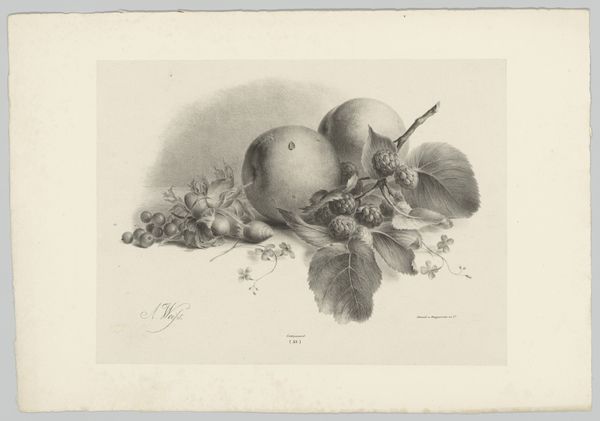
drawing, pencil, graphite
#
pencil drawn
#
drawing
#
fruit
#
coloured pencil
#
pencil
#
graphite
#
realism
Dimensions: height 295 mm, width 432 mm
Copyright: Rijks Museum: Open Domain
Curator: Up next, we have "Druiven, pruim, perziken en kersen", or "Grapes, plum, peaches and cherries" by Anton Weiss, created around 1836. It’s currently held here at the Rijksmuseum. Editor: Well, right away I'm struck by the still life's monochrome palette. There's an appealing starkness to the arrangement. I think the interplay of light and shadow brings an interesting texture and depth. Curator: Absolutely. Considering its graphite and pencil medium, Weiss really draws out such volume. We can observe his technique and dedication in crafting the illusion of three-dimensionality. Still life like this really benefited from developments in mass manufacturing and the commodification of pencils. Artists no longer needed to prepare their own materials, a really revolutionary shift. Editor: Agreed, and what makes this work captivating, from my perspective, is how Weiss employs varied forms and tones to differentiate between textures—the waxy leaves versus the matte plum or shiny cherries, the translucence of grapes. He orchestrates a visual language with just tonal variation. Curator: I concur. But it also points towards a rising merchant class. Access to this array of fruit suggests more disposable income available to afford luxury goods. Did people want this hung in their homes? Probably to broadcast their new levels of buying power. Editor: Possibly, though, one might argue there’s something universal in its balanced arrangement. Look at the placement of fruit: there is something deeply satisfying and complete. The diagonal of grapes plays off against the roundness of the peach, there's something that pleases our senses and speaks to form alone. Curator: Yes, and the print speaks to art world distribution. These kinds of images became cheaper to print and helped solidify artistic movements, spread styles, and democratize art consumption. This object embodies production and the art market, a kind of consumerism. Editor: All these observations are essential in expanding one’s reading of this work and highlighting why, as you said, appreciating art involves going beyond the obvious and seeing beyond just mere aesthetic appreciation.
Comments
No comments
Be the first to comment and join the conversation on the ultimate creative platform.
